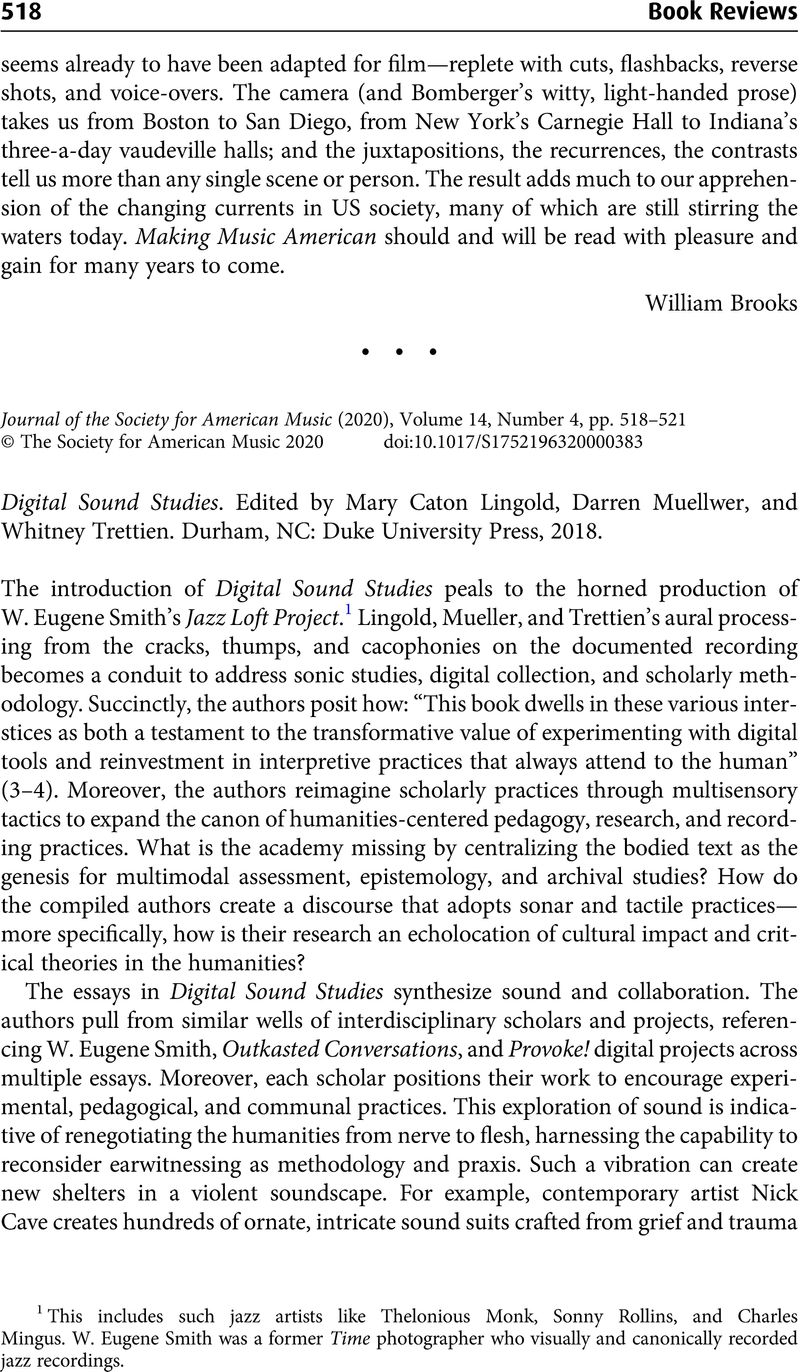No CrossRef data available.
Published online by Cambridge University Press: 19 November 2020

1 This includes such jazz artists like Thelonious Monk, Sonny Rollins, and Charles Mingus. W. Eugene Smith was a former Time photographer who visually and canonically recorded jazz recordings.
2 San Francisco Museum of Modern Art, “Discussion Questions: Nick Cave's Soundsuit,” https://www.sfmoma.org/read/discussion-questions-nick-cave-soundsuit/.
3 Wood, Peter H., Black Majority: Negros in South Carolina from 1670 through the Stono Rebellion (New York: W. W. Norton, 1975)Google Scholar.
4 Ong, Walter J., Rhetoric, Romance, and Technology; Studies in the Interaction of Expression and Culture (Ithaca, NY: Cornell University Press, 1971)Google Scholar.
5 Sounding Out!, https://soundstudiesblog.com/.
6 Stoever, Jennifer Lynn, The Sonic Color Line: Race and the Cultural Politics of Listening (New York: New York University Press, 2016)CrossRefGoogle Scholar.
7 Sterne, Jonathan, The Sound Studies Reader (New York: Routledge, 2012)CrossRefGoogle Scholar.
8 Campt, Tina M., Listening to Images (Durham: Duke University Press, 2017)CrossRefGoogle Scholar.
9 Wilderson, Frank B., , III, Red, White & Black: Cinema and the Structure of U.S. Antagonisms (Durham: Duke University Press, 2010)CrossRefGoogle Scholar; Sharpe, Christina Elizabeth, In the Wake: On Blackness and Being (Durham: Duke University Press, 2016)Google Scholar; and McMillan, Uri, Embodied Avatars: Genealogies of Black Feminist Art and Performance (New York: New York University Press, 2015)CrossRefGoogle Scholar.
10 Digital Cultural Rhetoric Scholars Angela Haas, Laura Gonzalez, and Victor Del Hierro.